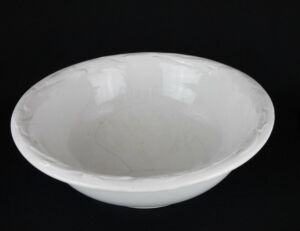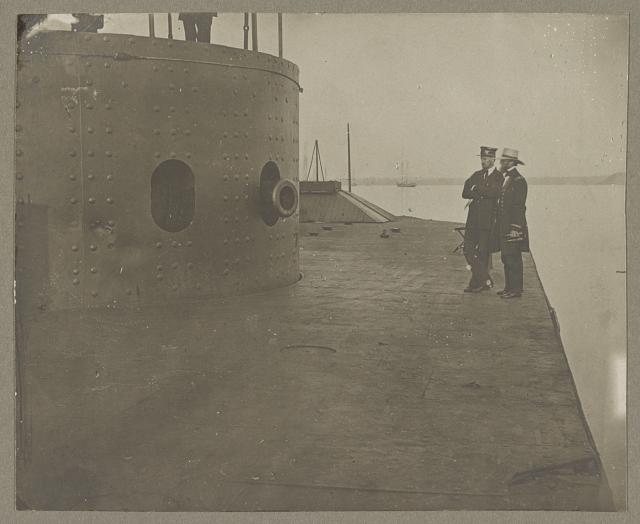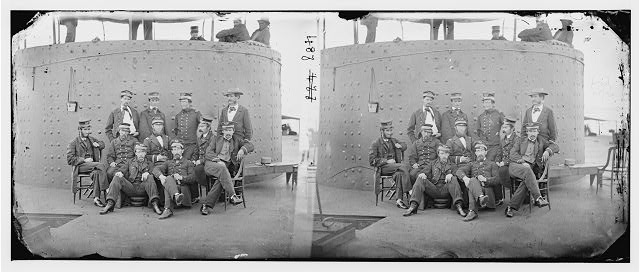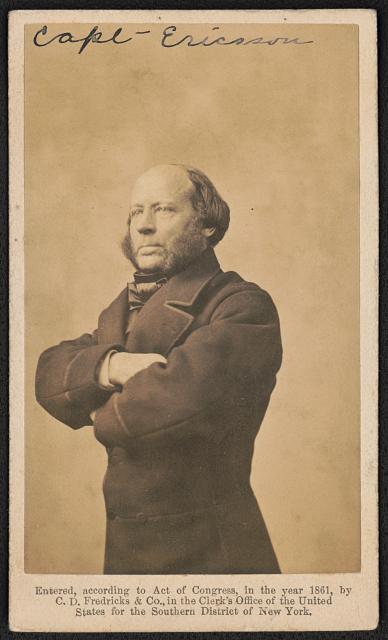
September 27, 2017
A Tale of an Extraordinary Ship and an Ordinary Bowl
The USS Monitor was the first ironclad ship, and although it did not have a long life, it left quite a legacy. In fact, Winston Churchill stated, “The combat of the Merrimac and the Monitor made the greatest change in the sea-fighting since cannon by gunpowder had been mounted on ships four hundred years before.” This bowl comes from the Monitor.
During the Civil War, the Union was in a race to complete the Monitor in time to save their fleet of ships at Hampton Roads, and prevent the Virginia from accomplishing any further damage. The Monitor was completed in time, and the ship and the battle they had with the Virginia set an example for the future. Both sides declared that they won, as each boat accomplished some of what they set out to do.
At the beginning of the second year of the Civil War, as General McClellan launched his Peninsular Campaign–the first major advance into Confederate territory–Union and Confederate ship builders were in a race to complete the first American ironclad ships.
These powerful battleships, plated in metal and thus able to withstand direct fire, had been in use in European navies for several years but the technology had not yet been replicated by Americans. Both North and South wanted to be first to complete and put into action an ironclad ship, with the military advantage that would allow.
The Confederates won this arms race, pitting their ironclad, the CSS Virginia, against the ships at Hampton Roads on March 8, 1862, sinking two ships in one day of attack. The Union shipbuilders were close behind, sending the USS Monitor into battle the following day. Although the Virginia did damage some of the larger ships during the ensuing two day battle, the Monitor stopped it from destroying the entire fleet and blocked the Virginia from continuing up the coast to cause more damage to the Union.
Because each boat accomplished some of what they set out to do, both sides declared that they won. Although this fight is known today as having an inconclusive result, it was an extremely important event in history as it set an example for the future. The design of the ships and the way they fought was something that was utilized throughout western world following the battle.

Above: inspecting damage on the USS Monitor. Image from Library of Congress.
Unfortunately, the Monitor only had a brief reign as the pinnacle of Union technology. It capsized during a large storm less than six months after the battle of Hampton Roads, on December 31, 1862. The Monitor still lays where it sank today, off the coast of North Carolina. In fact, it is preserved and protected by the National Oceanic and Atmospheric Administration (NOAA). They are still learning and gathering significant information about this world-changing ship, including finding artifacts from the wreckage.
This bowl was given to the Hennepin History Museum in 1965 by the granddaughter of Louis Stodder, who was the ship’s Acting Master during the Civil War, and one of the survivors from it’s sinking. Later in his life, Stodder became Harbor Master of New York City until his death in 1912.

Above: on the deck of the USS Monitor; Louis Stodder is in the second row, first on the left. (Image from Library of Congress)
The bowl presumably graced Stodder’s nightstand until the day it sank in 1862. Although it isn’t clearly visible in the photo, careful examination of the artifact shows a faded inscription in elegant script along the side that reads “Monitor.”
Another Hennepin County/USS Monitor connection? The Ericcson neighborhood in south Minneapolis was named after John Ericcson, the Swedish-born engineer who designed the USS Monitor.

John Erricson (Image from Library of Congress)
Resources
USS Monitor: Sinking of a Legacy
USS Monitor: A Cheesebox on a Raft
Author Bio
Lindsay Simmons is an art history and museum studies graduate student at the University of St. Thomas in St. Paul. She spent the summer working on the museum inventory project, assisting in rehousing and cataloguing some of the museum’s 15,000 objects. In fact, this washbowl was one of the objects she catalogued for the collection. She enjoyed researching this object as it is an important piece in the museum’s collection, and as a resident of Minneapolis, she finds learning about the history of the residents of the city and their ancestors fascinating.
